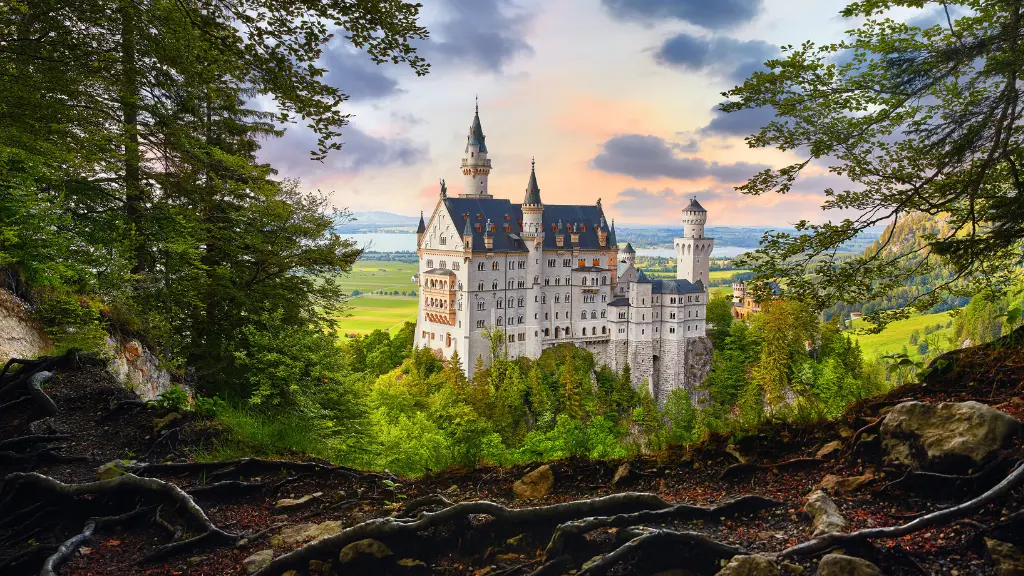Neuschwanstein Castle is one of the most iconic landmarks in Germany. Located in the Bavarian Alps near the town of Füssen, it attracts millions of visitors annually.
This 19th-century masterpiece, commissioned by King Ludwig II, looks like it was plucked from a fairy tale. Its stunning architecture and breathtaking location make it a must-visit for anyone traveling to Germany.
You May Also Like: Explore the Stunning Amer Palace in Jaipur, India

1. The History of Neuschwanstein Castle
King Ludwig II, often called the “Fairy Tale King,” commissioned Neuschwanstein Castle in 1869. It was designed as a retreat and homage to Richard Wagner, the king’s favorite composer.
- Construction Challenges: The castle took over two decades to build and remains unfinished.
- Ludwig’s Vision: It combines medieval and romantic styles, reflecting Ludwig’s love for fairy tales and operas.
- Posthumous Fame: Ludwig lived in the castle for only 172 days before his mysterious death in 1886. Afterward, it was opened to the public to pay off his debts.
Today, Neuschwanstein is a symbol of Germany’s cultural heritage.
2. Architectural Marvel
Neuschwanstein Castle is an architectural wonder that blends multiple styles:
- Romanesque Revival: Towering turrets, arched windows, and intricate carvings.
- Medieval Influences: Inspired by old German knightly castles.
- Interior Grandeur: Rooms like the Throne Hall and Singer’s Hall showcase luxurious designs with murals, chandeliers, and gold accents.
Its design has inspired pop culture, including Disney’s Sleeping Beauty Castle.
3. How to Get to Neuschwanstein Castle
The castle is located near Füssen, a town in southern Bavaria.
- By Train: Take a train to Füssen from Munich or Augsburg. From Füssen, buses connect to the village of Hohenschwangau.
- By Car: A scenic 2-hour drive from Munich. Parking is available near the castle’s base.
- On Foot: A 30-minute uphill walk from the ticket center to the castle.
4. Best Time to Visit
Each season offers a unique experience at Neuschwanstein:
- Spring and Summer (April–September): Green landscapes and comfortable weather.
- Fall (October–November): Vibrant autumn foliage adds magic to the scenery.
- Winter (December–March): A snowy wonderland creates a fairy-tale vibe, though paths may be icy.
Booking tickets in advance is recommended, as the castle sees high tourist traffic.
5. Tickets and Guided Tours
You can purchase tickets online or at the ticket center in Hohenschwangau.
- Standard Entry: Includes a timed entry for a guided tour inside the castle.
- Combination Tickets: Access to nearby attractions like Hohenschwangau Castle and Museum of the Bavarian Kings.
- Tour Duration: About 30 minutes, covering key areas like the Throne Room and Ludwig’s bedroom.
6. Exploring the Surroundings
Neuschwanstein isn’t just about the castle. Its location offers plenty of additional attractions.
Hohenschwangau Castle
Located nearby, this was King Ludwig II’s childhood home.
Marienbrücke (Mary’s Bridge)
This bridge offers the best views of Neuschwanstein. It’s perfect for photography, though it can be crowded.
Alpsee Lake
A serene spot for picnics or a leisurely walk. The reflection of the castle on the lake is stunning.
Tegelberg Mountain
Hike or take a cable car for panoramic views of the Bavarian Alps.
7. Practical Tips for Visitors
Here’s how to make your visit smooth and enjoyable:
- Arrive Early: Avoid the midday crowds.
- Wear Comfortable Shoes: The walk to the castle and Marienbrücke involves uneven paths.
- Check the Weather: Pack accordingly, especially in winter.
- Photography Restrictions: Photos are not allowed inside the castle but permitted outside.
8. Nearby Day Trips
Extend your journey with these nearby destinations:
- Linderhof Palace: Another of King Ludwig’s creations, known for its stunning gardens.
- Oberammergau: A charming village famous for woodcarvings and frescoed buildings.
- Garmisch-Partenkirchen: A ski resort town and gateway to Zugspitze, Germany’s highest peak.
9. Why Neuschwanstein Captures the Imagination
Neuschwanstein Castle is more than just a historic site. It represents the romantic ideals of a king who sought to create his dream world. Its connection to fairy tales, scenic surroundings, and timeless architecture make it a place where reality and fantasy blend.
10. Sustainability and Tourism
Mass tourism poses challenges to preserving Neuschwanstein Castle. Travelers can contribute by:
- Booking Official Tours: Supports conservation efforts.
- Staying Local: Choose nearby accommodations to reduce your carbon footprint.
- Respecting the Environment: Avoid littering and stick to designated paths.
Final Thoughts
Visiting Neuschwanstein Castle feels like stepping into a fairy tale. Its beauty, history, and cultural significance make it one of Germany’s must-see landmarks. Whether you’re an architecture enthusiast, history lover, or simply looking for breathtaking scenery, this Bavarian gem promises an unforgettable experience.










